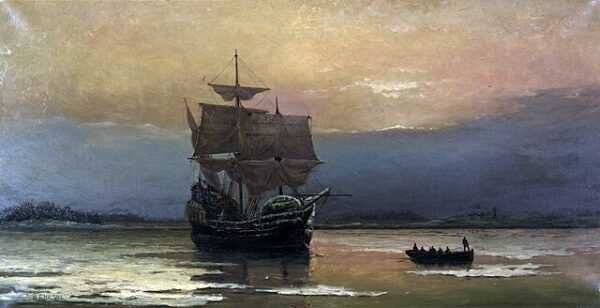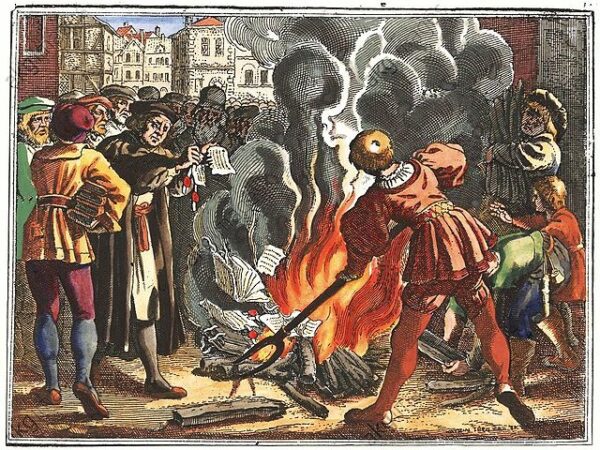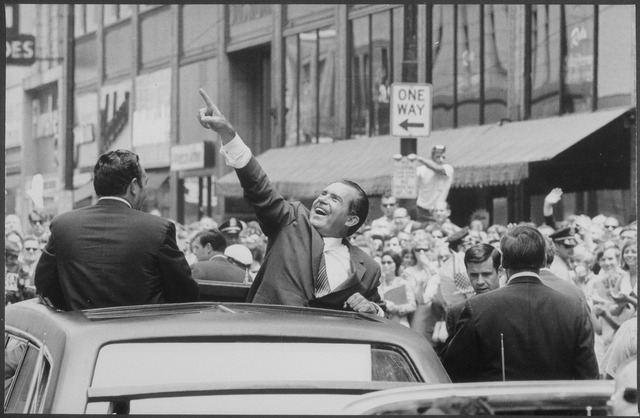On September 6, 1620, one of the most famous ships ever carried 40 “Saints” ready to start a new life of freedom in the New World of America. Departing from Plymouth, England, the Mayflower, along with its leaky companion The Speedwell, set sail for America.
The Mayflower was a modestly sized ship, about 90 feet in length, and it carried a group of 102 passengers, comprising Pilgrims seeking religious freedom and a fresh start in the New World, along with a crew. Their destination was the northern part of the Virginia Colony.
Things did not go as planned, however. The journey was arduous, plagued by turbulent seas and harsh weather conditions. The cramped quarters on the ship tested the passengers’ endurance, leading to a series of challenges including seasickness, scurvy, and overcrowding. Yet, the determination and resolve of these Pilgrims remained steadfast as they embarked on their historic quest for religious freedom and a new beginning in America.
The History Channel writes, “The Speedwell began to leak almost immediately, however, and the ships headed back to port in Plymouth. The travelers squeezed themselves and their belongings onto the Mayflower, a cargo ship about 80 feet long and 24 feet wide and capable of carrying 180 tons of cargo. The Mayflower set sail once again under the direction of Captain Christopher Jones.
Because of the delay caused by the leaky Speedwell, the Mayflower had to cross the Atlantic at the height of storm season. As a result, the journey was horribly unpleasant. Many of the passengers were so seasick they could scarcely get up, and the waves were so rough that one “Stranger” was swept overboard. (It was “the just hand of God upon him,” Bradford wrote later, for the young sailor had been “a proud and very profane yonge man.”)
After sixty-six days, or roughly two miserable months at sea, the ship finally reached the New World. There, the Mayflower’s passengers found an abandoned Indian village and not much else. They also found that they were in the wrong place: Cape Cod was located at 42 degrees north latitude, well north of the Virginia Company’s territory. Technically, the Mayflower colonists had no right to be there at all.
In order to establish themselves as a legitimate colony (“Plymouth,” named after the English port from which they had departed) under these dubious circumstances, 41 of the Saints and Strangers drafted and signed a document they called the Mayflower Compact. This Compact promised to create a “civil Body Politick” governed by elected officials and “just and equal laws.” It also swore allegiance to the English king.”
The settlers in New England faced many challenges during their first year due to the harsh winters and lack of supplies, resulting in a significant loss of life. However, thanks to the help of Native Americans, especially Squanto and the Wampanoag tribe, the settlers learned to farm and adapt to the tough conditions, which helped them survive.
As time passed, Plymouth Colony thrived and grew bigger, attracting more settlers and becoming a prosperous community. The colony is best known for the first Thanksgiving feast in 1621, which was a three-day celebration that marked the successful harvest and the peaceful coexistence between the Pilgrims and the Wampanoag. Plymouth Colony lasted over 70 years before it merged with the larger Massachusetts Bay Colony in 1691.
Today, the Mayflower’s journey on September 6, 1620, remains an enduring symbol of courage, determination, and the pursuit of freedom.






